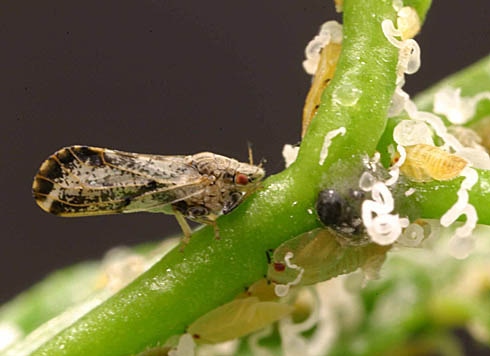November 23, 2010

Asian citrus psyllid populations in North and South America are genetically distinct, according to research conducted by U.S. Department of Agriculture (USDA) scientists and cooperators.
In an effort to help control the spread of the psyllid-transmitted citrus greening disease, also known as Huanglongbing, Agricultural Research Service (ARS) molecular biologist Jesse de León and colleagues from North America and South America are applying molecular tools that genetically characterize the Asian citrus psyllid. ARS is USDA's principal intramural scientific research agency, and this research supports the USDA priority of promoting international food security.
De León, who is stationed at the ARS Kika de la Garza Subtropical Agricultural Research Center in Weslaco, Texas, and cooperators found two groups of Asian citrus psyllid in the Americas—one prevalent in South America, the other in North America. The researchers sought to determine if the Asian citrus psyllid found in North America originated from South America.
Through molecular testing, de León found the two groups to be genetically distinct. This suggests that the psyllid in North America didn't come from South America. Instead, each continent was probably invaded by insects from different countries in Asia. Details of the research were presented at the June 2010 meeting of VI Congreso Argentino de Citricultura in Tucumán, Argentina.
De León next plans to examine worldwide populations of the Asian citrus psyllid to determine the North American insect's exact origin. According to de León, this information will help researchers determine where to precisely collect pre-adapted natural enemies of the psyllid for a biocontrol program.
In a related project, de León's team is studying a small wasp named Tamarixia radiata that could be used to help control the Asian citrus psyllid. Similar to the Asian citrus psyllid project, the scientists are trying to determine whether T. radiata exists in the Americas as a single species or as genetically distinct populations. So far, they have identified four groups of T. radiata in the Americas.
Read more about this research in the November/December 2010 issue of Agricultural Research magazine.
You May Also Like




